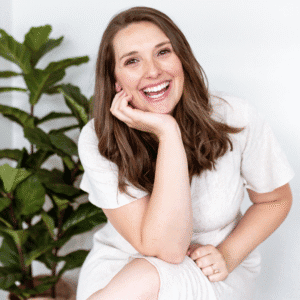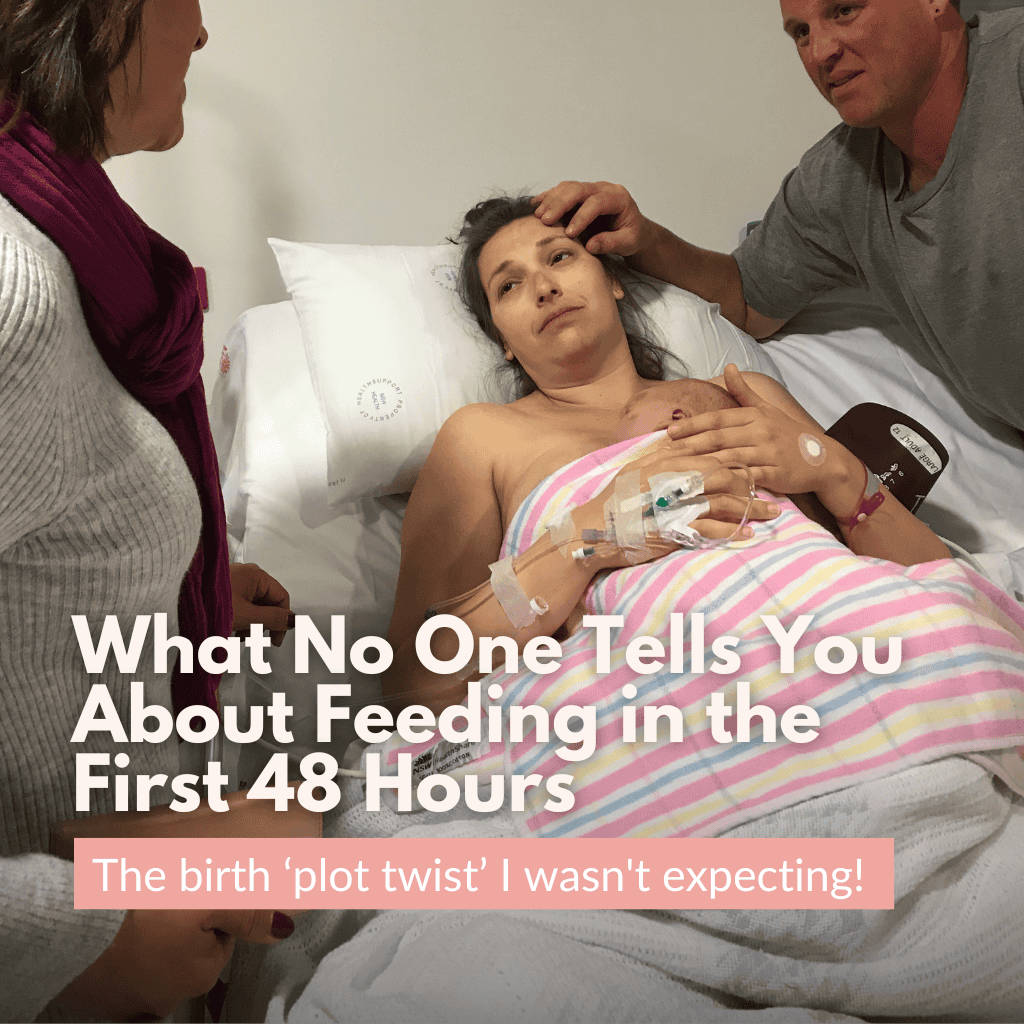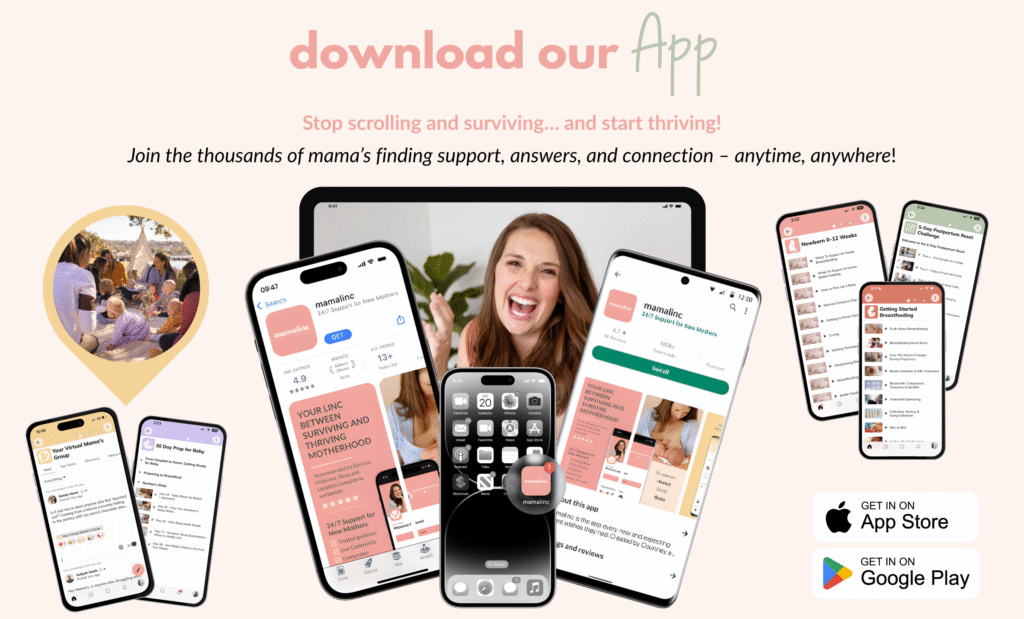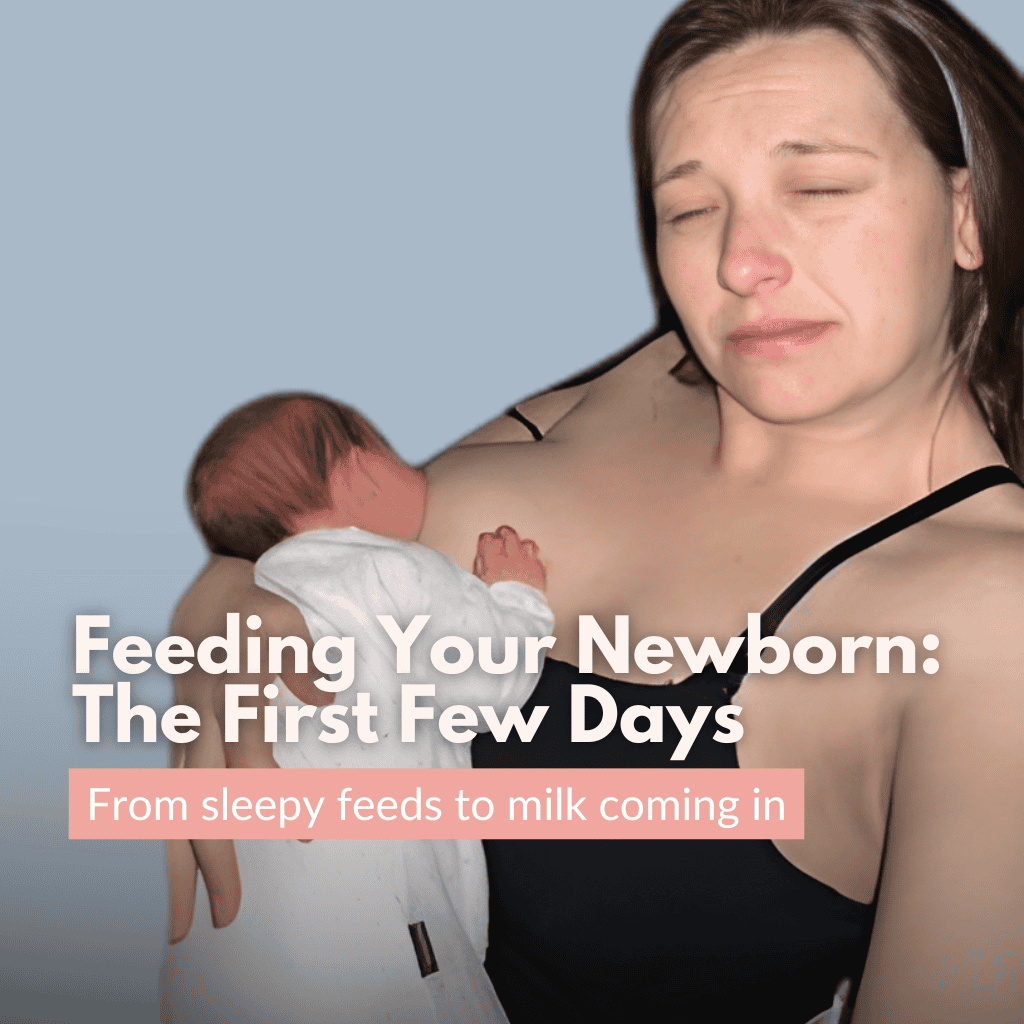Hey mama 👋🏼
Let’s talk about something people don’t prepare you for properly – what it’s actually like trying to feed your baby in those first couple of days after birth.
You’re sore. You’re exhausted. You might be living off cold toast and hospital juice boxes. And just when you think you can finally close your eyes… that tiny, squishy human starts rooting around again like a very cute piranha.
Sound intense? That’s because it is.
But you’re not broken – and you’re definitely not alone.
My Story: The 'plot twist' I wasn't expecting!
As a nurse, I knew something wasn’t right.
Thad’s heart rate kept dipping – low, then lower – until the midwife hit the buzzer and the room suddenly filled with people.
I’d been induced. I was exhausted. My body had nothing left to give.
Then came the forceps. I remember the sound of metal, a quick blur of hands, and then… blood. A lot of it.
Brendan went white. I honestly thought he was going to hit the floor.
The team worked fast, but they couldn’t stop the bleeding there, so off to theatre we went. I was light-headed, woozy, vomiting into a bag as they raced me down the hall.
I didn’t pass out, but I remember thinking, I might.
When I came back to recovery, I was stitched – badly torn (I’m talking from the front all the way to back), shaky, and trying to process what had just happened. It wasn’t the birth I’d pictured, not by a long shot.
When they wheeled me back to Brendan and Thad, I was too weak to lift him. My hands shook every time I tried.
So Brendan became my arms. He brought Thad to my chest, helped position him, did the nappy changes, the resettles – everything.
Those first feeds weren’t calm or beautiful. They were clumsy, painful, messy… and full of tears from both of us.
But here’s what changed everything: I’d antenatally expressed colostrum.
While I was in theatre, Brendan fed it to Thad with a syringe. It kept him nourished, and it gave me something no midwife can hand you – a moment of grace.
It meant my baby was safe, fed, and waiting for me.
It meant I could rest for a few hours without panic.
And when my milk came in on Day 2, I was finally ready to try again – properly, gently, on my terms.
That experience taught me that feeding your baby isn’t just about milk.
It’s about having support, good information, and permission to do it your way – even when it all goes sideways.
The First Hour: Skin-to-Skin and Baby’s First Feed
If all goes well, your baby will land straight on your chest after birth for skin-to-skin. That moment does magic – regulating their breathing, heart rate, and temperature, and switching on your milk hormones.
Try that first feed while they’re calm and alert.
A few gentle tips:
- Express a few drops first to help baby find the nipple.
- Go laid-back or semi-reclined (especially if you’re stitched, sore, or feel like your body’s been hit by a small truck).
A tugging feeling is normal; stabbing pain is not. If it hurts the whole time, wave the nurse over – it might be a latch issue or tongue tie.
When Baby Just Wants to Sleep (a lot)
Totally normal!
Newborns can sleep through anything – except, apparently, the night.
They still need feeds, so here’s how to rouse a snoozy one:
- Offer the breast every 2–3 hours (don’t wait for crying).
- Do a halfway nappy change to wake them gently.
- Swap sides after that change.
- Use a hair tie or safety pin trick so you remember which side is next – because no one’s brain works on two hours of sleep.
This isn’t about strict schedules yet – just getting that milk factory firing up.
Day 2: The “Oh Wow, They’re Loud Now” Day
Day 2 hits like a plot twist.
Yesterday’s sleepy angel suddenly wakes up and realises they can make noise – lots of it.
They’ll want to feed every hour or two, sometimes constantly. That’s good! They’re turning your colostrum into mature milk.
It’s also… a lot.
This is your cue to tag-team.
Let your support person do the nappies, snack runs, and “where’s the dummy” missions while you focus on feeding and resting.
If you’ve got colostrum stored, use it for a quick top-up so you can nap – that’s what we call teamwork.
Comfort Is Everything
After birth, even sitting can feel like an Olympic sport.
If you’ve got stitches, a pillow under your butt is non-negotiable.
If you’ve had a C-section, remember: it is major surgery – go easy.
Try this:
- Pile pillows behind your back.
- Recline slightly so baby lies chest-to-chest.
- Ask for help (partners make great human tripods).
- Football hold is gold if your midline is sore.
You don’t need fancy gear – a rolled-up towel works just as well as the $90 breastfeeding pillow everyone on TikTok swears by.
Real Talk: Feeding Isn’t Always Insta-Ready
Some babies latch like pros; others act like they’ve never seen a nipple before.
Some feeds last five minutes; some last the length of a full Netflix episode.
Both are fine.
Here’s what “it’s working” looks like:
- Latch doesn’t feel like glass shards.
- You hear or see swallows.
- Bub settles afterward.
- Nappies keep coming (1 wet + 1 poo on Day 1; 2 wets by Day 2).
After each feed, smear on coconut oil or lanolin. Small act, huge difference.
Getting Help Isn’t Failure - It’s Strategy
Feeding is a full-time job in the beginning, and you deserve a roster.
Inside the mamalinc app you’ll find:
- Positioning and latch videos (because angles matter).
- Feeding through pain, C-section recovery, or trauma.
- Signs your baby’s getting enough.
- What’s normal in the chaos of early days.
- Syringe, hand-expressing, and partner-support guides.
Our 30-Day Prep for Baby course also covers antenatal expressing with videos and checklists – so you hit the ward feeling ready, not rattled.
From One Mama to Another
The first 48 hours can feel like a marathon in slow motion.
You’re tired, sore, emotional, and holding your whole world on your chest.
It’s not supposed to look perfect. It’s supposed to look like you doing your best.
So take the pressure off, grab a snack, and remember – you’ve got this, mama.
And when you don’t, mamalinc’s got you.

Courtney Garland
Courtney Garland, Founder of mamalinc, neonatal nurse, IBCLC lactation & paediatric sleep consultant Medical Board Chair of Haakaa and a mama of 4 is dedicated to improving postnatal support worldwide by blending clinical expertise with real-life experience to empower mama’s and parents with trusted guidance, compassion, and care.




